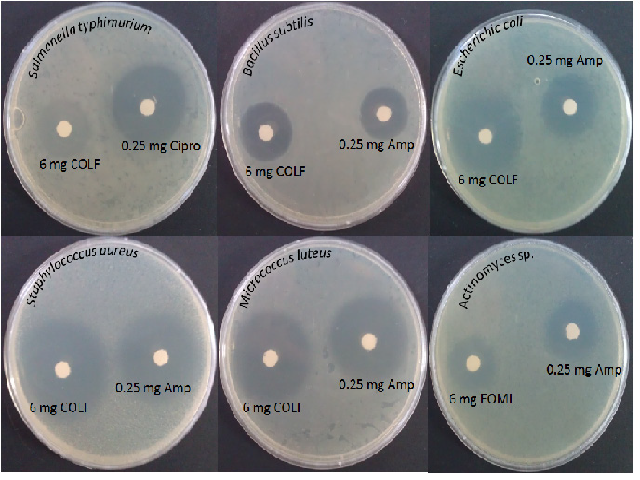Antioxidant, Antimutagenic and Cytotoxic Properties of Essential Oil from Corchorus olitorius L. Flowers and Leaf
DOI:
https://doi.org/10.5530/fra.2016.1.4Keywords:
Antioxidant, Antimicrobial, Antimutagenic, Chemical composition, Corchorus olitorius L., Cytotoxic, Essential oilAbstract
Background: This present research highlight the phytochemical profile, the antioxidant, the antimicrobial, the antimutagenic and the antiproliferative activities of an essential oil extracted from Corchorus olitorius L. flowers and leaf (COFL), an aromatic plant widely distributed in Tunisia and used as a traditional food plant. Salmonella typhimurium Gas chromatography/ mass spectrometry was used to determine the composition of the COFL essential oil (COFL-EO). Forty-three components were identified and the main compounds were benzaldehyde (56%), methyl 4-methoxysalicylate (6.55%) and carvacrol (4.75%). The COFL-EO was also found to possess antioxidant activities, as evaluated by the 1,1-diphenyl-2-picrylhydrazyl (DPPH) radical method and β-carotene bleaching assay. The antibacterial activities showed good growth inhibition compared to positive controls. The diameter of the inhibition zones reached a maximum of 16.7 ± 0.1 mm when tested against Salmonella typhimurium using just 6 mg extract. On the other hand, the antimutagenic activity was assessed using the Ames Salmonella/microsome mutagenicity test and the COLF-EO exhibited high antimutagenic effects at 0.125, 0.0125 and 0.00125 mg/plate. Antiproliferative activity of this essential oil evaluated in four mammalian cells lines was significantly stronger in Hela cell line (IC50=4 ± 0.98 μg/mL). Conclusion: Overall, results presented here suggest that the COFL-EO is a potential new source of active ingredients for food and pharmaceutical industry.
Downloads
Metrics





